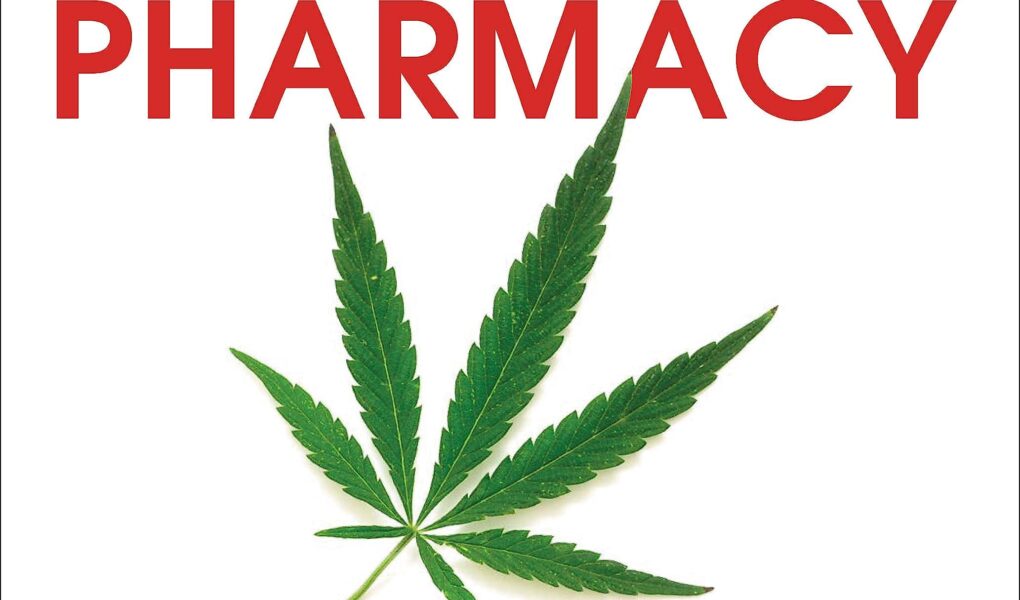In the evolving landscape of medicine and wellness, few topics have stirred as much debate and curiosity as medical marijuana. Once relegated to the shadows of prohibition and stigma, cannabis has emerged from the fog, illuminating a path filled with potential therapeutic benefits. As researchers delve deeper into the plant’s complex chemistry and its interaction with the human body, patients and practitioners alike are beginning to explore its multifaceted effects on health and quality of life. This article embarks on a comprehensive journey into the realm of medical marijuana, examining its impact on various ailments, understanding its potential as a treatment option, and juxtaposing the scientific findings with the personal stories of those who have ventured down this uncharted path. Join us as we unravel the nuanced effects of this ancient herb in the modern medical arena, where hope and science converge in the quest for healing.
Table of Contents
- Medical Marijuana and Pain Management: A Comprehensive Analysis
- The Role of Cannabinoids in Mental Health Care
- Evaluating the Impact on Chronic Conditions and Quality of Life
- Navigating Legal and Dosage Considerations for Safe Use
- Q&A
- Future Outlook
Medical Marijuana and Pain Management: A Comprehensive Analysis
Medical marijuana has emerged as a promising alternative for individuals seeking relief from chronic pain. The cannabis plant contains various cannabinoids, which interact with the body’s endocannabinoid system to alleviate discomfort. The most studied compounds, THC (tetrahydrocannabinol) and CBD (cannabidiol), have different effects on pain management. THC is known for its psychoactive properties and has been shown to reduce pain perception, while CBD is favored for its anti-inflammatory effects, offering a non-intoxicating option that many users find beneficial. This multi-faceted approach allows patients to customize their treatment based on their specific pain conditions and personal preferences.
Various forms of medical marijuana are available, enhancing accessibility and user experience. Patients can choose from oils, edibles, tinctures, and topical applications, each offering unique advantages in terms of onset time and duration of relief. Here’s a brief overview of popular forms:
| Form | Onset Time | Duration |
|---|---|---|
| Oils | 15-30 minutes | 4-6 hours |
| Edibles | 30-90 minutes | 6-8 hours |
| Tinctures | 15-20 minutes | 4-6 hours |
| Topicals | 30-90 minutes | 2-6 hours |
Additionally, individual responses to medical marijuana can vary significantly. Factors such as dosage, strain, and method of consumption play substantial roles in effectiveness. Patients often benefit from gradual dose adjustments and consultation with healthcare professionals to monitor progress and optimize treatment plans. Ensuring a tailored approach can enhance the therapeutic benefits of medical marijuana in managing pain, leading to improved quality of life.
The Role of Cannabinoids in Mental Health Care
The emergence of cannabinoids as a potential therapeutic option in mental health care has sparked considerable interest across various disciplines. Cannabis compounds, particularly THC (tetrahydrocannabinol) and CBD (cannabidiol), have been extensively researched for their effects on mood disorders, anxiety, and neurodegenerative conditions. Preliminary studies suggest that cannabinoids may help modulate neurotransmitter systems, leading to improvements in symptoms associated with various mental health issues. The interaction between these compounds and the body’s endocannabinoid system can promote emotional balance and create a sense of well-being.
Moreover, medical marijuana is being explored as an adjunctive treatment in cases of post-traumatic stress disorder (PTSD) and chronic anxiety. Many patients report a reduction in anxiety levels and a better quality of life when incorporating cannabinoids into their treatment plans. Several factors contribute to this beneficial effect, including:
- Anxiolytic properties: Cannabinoids can mitigate feelings of panic and fear.
- Mood enhancement: A positive impact on mood regulation may help combat depression.
- Sleep quality improvement: Better sleep can significantly contribute to overall mental health.
| Condition | Potential Benefit of Cannabinoids |
|---|---|
| Anxiety Disorders | Reduction in anxiety levels |
| PTSD | Decreased flashbacks and intrusive thoughts |
| Depression | Improved mood and emotional regulation |
| Insomnia | Enhanced sleep quality and duration |
Evaluating the Impact on Chronic Conditions and Quality of Life
Research surrounding medical marijuana has highlighted its potential benefits for managing chronic conditions, leading to improved quality of life for many patients. Conditions such as chronic pain, multiple sclerosis, and arthritis have seen positive outcomes in symptom management through cannabis use. Notably, patients report a significant reduction in pain levels, improved sleep quality, and decreased anxiety when integrating medical marijuana into their treatment regimens. The interaction of cannabinoids with the endocannabinoid system plays a crucial role in modulating pain and inflammation, providing patients with much-needed relief that traditional medications sometimes fail to deliver.
Moreover, the psychological benefits of medical marijuana cannot be overlooked. Many individuals struggling with chronic illnesses often battle accompanying mental health issues, such as depression and anxiety. The calming effects of certain cannabinoids can improve mood, promote relaxation, and enhance overall emotional well-being. A survey conducted among patients utilizing medical marijuana indicated that a considerable percentage experienced improvements in daily functioning, social interactions, and overall satisfaction with life. The following table summarizes some reported benefits:
| Condition | Reported Benefit | Improvement Percentage |
|---|---|---|
| Chronic Pain | Pain Reduction | 70% |
| Multiple Sclerosis | Spasticity Relief | 65% |
| Arthritis | Joint Pain Alleviation | 60% |
| Anxiety | Mood Enhancement | 75% |
Navigating Legal and Dosage Considerations for Safe Use
When considering the integration of medical marijuana into therapeutic practices, it’s crucial to familiarize oneself with the legal landscape. Varying by jurisdiction, laws governing the use of medical marijuana can influence patient access and the formulation of treatment plans. Understanding local regulations is imperative to ensure that patients receive legal and safe care. Important aspects to consider include:
- State-specific legislation governing medical marijuana use
- Approval of medical conditions that qualify for cannabis therapy
- Possession limits and regulations on cultivation
- Patient registration processes required for legal use
Alongside legal considerations, effective dosage management is essential for maximizing benefits while minimizing risks. Medical cannabis products vary widely in terms of potency, formulation, and delivery methods, leading to different dosage requirements for individual patients. To navigate this complexity, healthcare professionals and patients should focus on:
- Consultation with healthcare providers for personalized dosage assessment
- Starting with low doses and gradually adjusting as needed
- Monitoring effects and maintaining an open dialogue with practitioners
Additionally, the following table summarizes key delivery methods and their suggested initial dosage guidelines:
| Delivery Method | Initial Dosage |
|---|---|
| Inhalation (smoking or vaping) | 1-3 mg |
| Edibles | 2.5-5 mg |
| Tinctures | 1-2.5 mg |
| Topicals | Apply as needed |
Q&A
Q&A: Understanding the Effects of Medical Marijuana
Q: What is medical marijuana and how is it different from recreational marijuana?
A: Medical marijuana refers to the use of cannabis plants or their extracts to treat specific ailments, often regulated under state laws. Unlike recreational marijuana, which is consumed primarily for enjoyment, medical marijuana is prescribed by healthcare professionals with the intent to alleviate symptoms of various medical conditions.
Q: What medical conditions can be treated with medical marijuana?
A: Medical marijuana has been associated with relieving symptoms for several conditions, including chronic pain, epilepsy, multiple sclerosis, nausea from chemotherapy, and certain mental health disorders like anxiety and PTSD. Research continues to explore its efficacy across a wider range of ailments.
Q: What are the common delivery methods for medical marijuana?
A: Medical marijuana can be consumed in various forms, including dried flower that can be smoked or vaporized, oils and tinctures, edibles, and topical applications. Each method has its own onset time and duration of effects, allowing patients to choose based on their preferences and specific medical needs.
Q: What are the potential benefits of using medical marijuana?
A: Patients often report several benefits from medical marijuana, including reduced pain levels, decreased anxiety, improved sleep quality, and increased appetite. These effects can significantly enhance the quality of life for individuals dealing with chronic conditions, especially when traditional medications have proved ineffective or cause unwanted side effects.
Q: Are there any side effects associated with medical marijuana?
A: Yes, like any medication, medical marijuana can have side effects. Commonly reported side effects include dizziness, dry mouth, impaired short-term memory, and changes in mood. Additionally, its psychoactive component, THC, can cause feelings of euphoria or dysphoria, which may be unsettling for some patients. Hence, careful dosing and monitoring are crucial.
Q: Is medical marijuana safe for everyone?
A: While medical marijuana can be beneficial for many, it is not universally safe. Individuals with a history of substance abuse, certain mental health conditions, or pre-existing medical issues should consult healthcare providers before use. Customizing treatment to individual health profiles is essential to minimize risks.
Q: How does the legal landscape affect access to medical marijuana?
A: The legal status of medical marijuana varies significantly by region. In some places, it is fully legalized for medicinal use, while in others it remains illegal or restricted. Patients must navigate local regulations to access cannabis products, often requiring a doctor’s recommendation.
Q: What does the current research say about the effectiveness of medical marijuana?
A: Research on medical marijuana is ongoing and evolving. Some studies show promising results concerning its ability to manage symptoms, while others call for more rigorous clinical trials to confirm efficacy and understand its mechanisms. It is essential to consider both the evidence and individual experiences when evaluating its effectiveness.
Q: How should patients approach the decision to use medical marijuana?
A: Patients considering medical marijuana should engage in open discussions with their healthcare providers about their symptoms, treatment goals, and any potential risks. Together, they can create a personalized plan that includes informed choices about dosage and delivery methods, ensuring a balanced approach to managing health.
Q: What’s the future of medical marijuana in healthcare?
A: As public perception shifts and research expands, medical marijuana is increasingly being integrated into mainstream healthcare discussions. Future advancements may lead to a broader understanding of its benefits and drawbacks, paving the way for refined treatment protocols and legislation that ensures safe and effective use.
Future Outlook
the effects of medical marijuana span a complex tapestry of potential benefits and challenges. As we continue to unravel the intricate relationship between cannabinoids and the human body, it is clear that this multifaceted plant holds promise for many patients seeking relief from a myriad of ailments. However, it is equally important to approach this topic with a balanced perspective, acknowledging the necessity for rigorous research and responsible use. As policy evolves and societal attitudes shift, understanding the nuanced effects of medical marijuana will be crucial in ensuring that those who may benefit from it do so safely and effectively. The dialogue surrounding medical marijuana is ongoing, inviting us all to stay informed and engaged as we navigate the future of healthcare and holistic healing.



